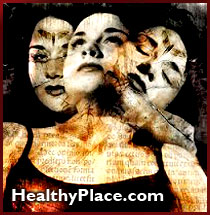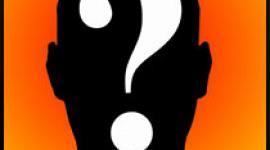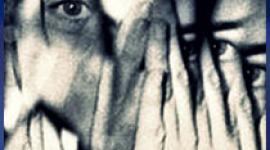Bipolar 'Mixed' State
Symptoms of mania and depression are present at the same time. The symptom picture frequently includes agitation, trouble sleeping, significant change in appetite, psychosis, and suicidal thinking. Depressed mood accompanies manic activation.
 Sometimes severe mania or depression is accompanied by periods of psychosis. Psychotic symptoms include hallucinations (hearing, seeing, or otherwise sensing the presence of stimuli that are not actually there) and delusions (false fixed beliefs that are not subject to reason or contradictory evidence and are not explained by a person's usual cultural concepts). Psychotic symptoms associated with bipolar disorder typically reflect the extreme mood state at the time (e.g., grandiosity during mania, worthlessness during depression).
Sometimes severe mania or depression is accompanied by periods of psychosis. Psychotic symptoms include hallucinations (hearing, seeing, or otherwise sensing the presence of stimuli that are not actually there) and delusions (false fixed beliefs that are not subject to reason or contradictory evidence and are not explained by a person's usual cultural concepts). Psychotic symptoms associated with bipolar disorder typically reflect the extreme mood state at the time (e.g., grandiosity during mania, worthlessness during depression).
Bipolar disorder with rapid cycling is defined as four or more episodes of illness within a 12-month period. This form of the illness tends to be more resistant to treatment than non-rapid-cycling bipolar disorder.
The particular combinations and severity of symptoms vary among people with bipolar disorder. Some people experience very severe manic episodes, during which they may feel "out of control," have major impairment in functioning, and suffer psychotic symptoms. Other people have milder hypomanic episodes, characterized by low-level, non-psychotic symptoms of mania such as increased energy, euphoria, irritability, and intrusiveness, that may cause little impairment in functioning but are noticeable to others. Some people suffer severe, incapacitating depressions, with or without psychosis, that prevent them from working, going to school, or interacting with family or friends. Others experience more moderate depressive episodes, which may feel just as painful but impair functioning to a lesser degree. Inpatient hospitalization is often necessary to treat severe episodes of mania and depression.
A diagnosis of bipolar I disorder is made when a person has experienced at least one episode of severe mania; a diagnosis of bipolar II disorder is made when a person has experienced at least one hypomanic episode but has not met the criteria for a full manic episode. Cyclothymic disorder, a milder illness, is diagnosed when a person experiences, over the course of at least 2 years (1 year for adolescents and children), numerous periods with hypomanic symptoms and numerous periods with depressive symptoms that are not severe enough to meet criteria for major manic or depressive episodes. People who meet criteria for bipolar disorder or unipolar depression and who experience chronic psychotic symptoms, which persist even with clearing of the mood symptoms, suffer from schizoaffective disorder. The diagnostic criteria for all mental disorders are described in the Diagnostic and Statistical Manual of Mental Disorders, 4th Edition (DSM-IV).2
Many patients with bipolar disorder are initially misdiagnosed.3 This occurs most often either when a person with bipolar II disorder, whose hypomania is not recognized, is diagnosed with unipolar depression, or when a patient with severe psychotic mania is misjudged to have schizophrenia. However, since bipolar disorder, like other mental illnesses, cannot yet be identified physiologically (for example, by a blood test or a brain scan), diagnosis must be made on the basis of symptoms, course of illness, and, when available, family history.
next: The Illness of Vincent Van Gogh
~ bipolar disorder library
~ all bipolar disorder articles
APA Reference
Staff, H.
(2009, January 12). Bipolar 'Mixed' State, HealthyPlace. Retrieved
on 2026, January 11 from https://www.healthyplace.com/bipolar-disorder/articles/bipolar-mixed-state



